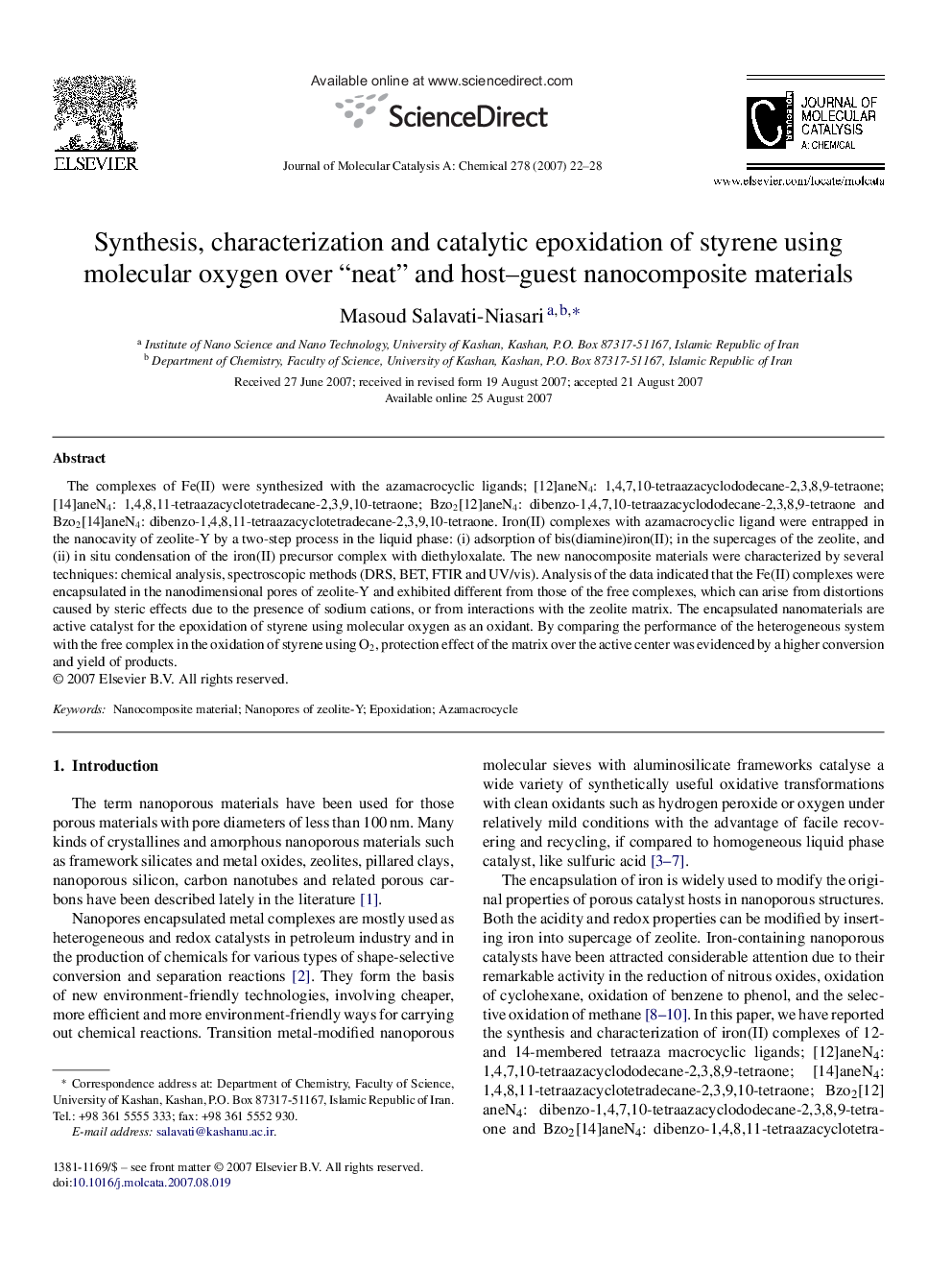| کد مقاله | کد نشریه | سال انتشار | مقاله انگلیسی | نسخه تمام متن |
|---|---|---|---|---|
| 67707 | 48492 | 2007 | 7 صفحه PDF | دانلود رایگان |

The complexes of Fe(II) were synthesized with the azamacrocyclic ligands; [12]aneN4: 1,4,7,10-tetraazacyclododecane-2,3,8,9-tetraone; [14]aneN4: 1,4,8,11-tetraazacyclotetradecane-2,3,9,10-tetraone; Bzo2[12]aneN4: dibenzo-1,4,7,10-tetraazacyclododecane-2,3,8,9-tetraone and Bzo2[14]aneN4: dibenzo-1,4,8,11-tetraazacyclotetradecane-2,3,9,10-tetraone. Iron(II) complexes with azamacrocyclic ligand were entrapped in the nanocavity of zeolite-Y by a two-step process in the liquid phase: (i) adsorption of bis(diamine)iron(II); in the supercages of the zeolite, and (ii) in situ condensation of the iron(II) precursor complex with diethyloxalate. The new nanocomposite materials were characterized by several techniques: chemical analysis, spectroscopic methods (DRS, BET, FTIR and UV/vis). Analysis of the data indicated that the Fe(II) complexes were encapsulated in the nanodimensional pores of zeolite-Y and exhibited different from those of the free complexes, which can arise from distortions caused by steric effects due to the presence of sodium cations, or from interactions with the zeolite matrix. The encapsulated nanomaterials are active catalyst for the epoxidation of styrene using molecular oxygen as an oxidant. By comparing the performance of the heterogeneous system with the free complex in the oxidation of styrene using O2, protection effect of the matrix over the active center was evidenced by a higher conversion and yield of products.
The complexes of Fe(II) were synthesized with the azamacrocyclic ligands; [12]aneN4: 1,4,7,10-tetraazacyclododecane-2,3,8,9-tetraone; [14]aneN4: 1,4,8,11-tetraazacyclotetradecane-2,3,9,10-tetraone; Bzo2[12]aneN4: dibenzo-1,4,7,10-tetraazacyclododecane-2,3,8,9-tetraone and Bzo2[14]aneN4: dibenzo-1,4,8,11-tetraazacyclotetradecane-2,3,9,10-tetraone. Iron(II) complexes with azamacrocyclic ligand were entrapped in the nanocavity of zeolite-Y by a two-step process in the liquid phase: (i) adsorption of [bis(diamine)iron(II)]; [Fe(N-N)2]@NaY; in the supercages of the zeolite, and (ii) in situ condensation of the iron(II) precursor complex with diethyloxalate. These new nanocatalyst materials are efficient heterogeneous catalysts for the epoxidation of styrene with molecular oxygen in the absence of a sacrificial reductant.Figure optionsDownload as PowerPoint slide
Journal: Journal of Molecular Catalysis A: Chemical - Volume 278, Issues 1–2, 14 December 2007, Pages 22–28